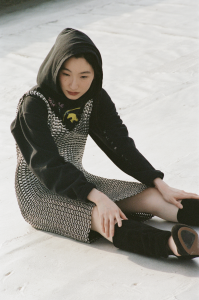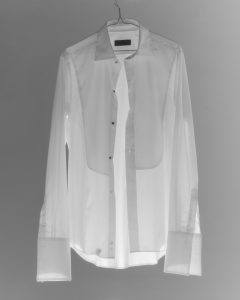- Competition: James Eden walks David Hellqvist through his Manchester factory, showing the manufacturing process behind a Pocket jacket… and we give one away!
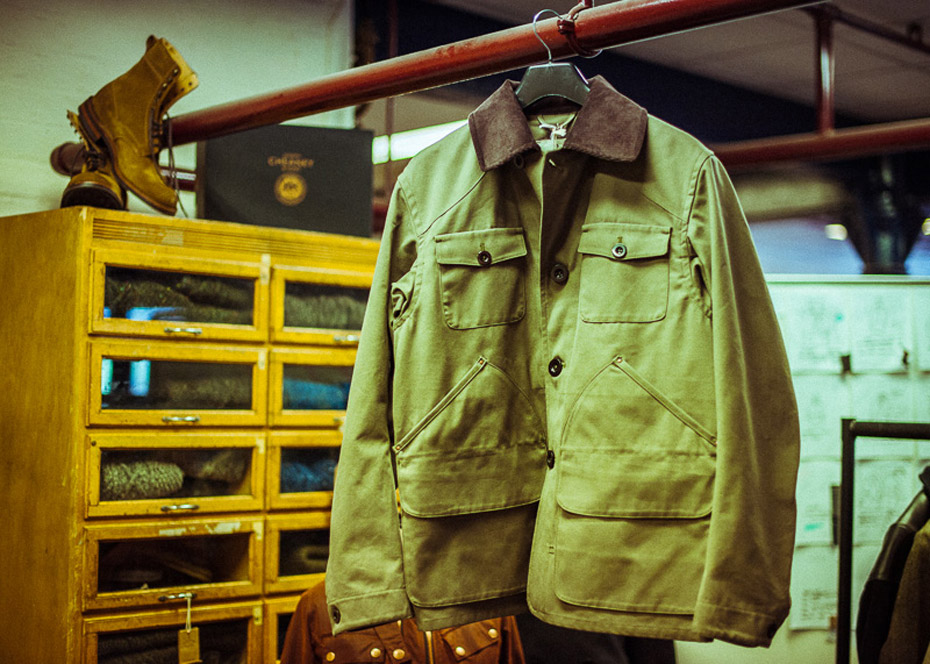
Words David Hellqvist
Photos Morgan O’DonovanJames Eden is not only the 29-year-old owner of the Manchester-based Private White VC brand, he’s also the great grandson of Private James White who founded the fabric factory after being awarded the Victoria Cross during the First World War. Eden knows the story very well: “He was on the Diyala River in Mesopotamia in 1917. Under intense enemy fire he jumped overboard and tied a telephone wire to himself and swam to shore, saving the lives of the six soldiers onboard, and all the supplies and armaments that were on board at the time”.

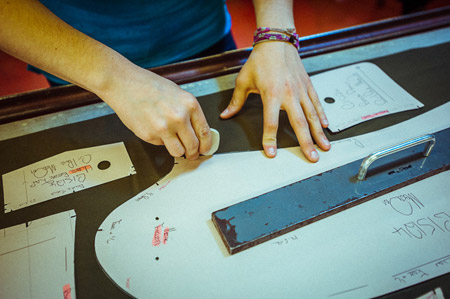
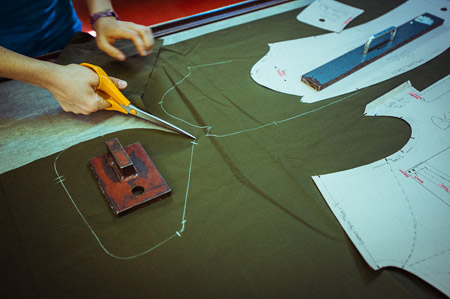 Once back in the UK, the young war hero needed a job. “There were thousands of jobs for youngsters in the textile industry and so he started work here, like many of his peers, as an apprentice in this raincoat factory. From there he became a pattern cutter, garment technologist, general manager then subsequently owner,” Eden explains. The factory, only a few hundred metres from the Manchester city centre, in a surprisingly run down industrial area, is today the main creative and technical hub for Private White VC, a truly British brand in more than ways than one. As well as an aesthetic firmly based in domestic workwear and wardrobe staples, the company strongly believes in the ‘Made in Britain’ motto: “We’re trying to sustain, promote, redevelop and revitalise the British garment making industry, that’s why this factory is here, that’s why all these people are here, that’s why my sister is here, my dog is here… we care passionately about the craft of garment making.”
Once back in the UK, the young war hero needed a job. “There were thousands of jobs for youngsters in the textile industry and so he started work here, like many of his peers, as an apprentice in this raincoat factory. From there he became a pattern cutter, garment technologist, general manager then subsequently owner,” Eden explains. The factory, only a few hundred metres from the Manchester city centre, in a surprisingly run down industrial area, is today the main creative and technical hub for Private White VC, a truly British brand in more than ways than one. As well as an aesthetic firmly based in domestic workwear and wardrobe staples, the company strongly believes in the ‘Made in Britain’ motto: “We’re trying to sustain, promote, redevelop and revitalise the British garment making industry, that’s why this factory is here, that’s why all these people are here, that’s why my sister is here, my dog is here… we care passionately about the craft of garment making.”
When visiting the factory, Port asked to select a jacket from the brand’s sartorial repertoire and to follow the manufacturing process on the factory floor. We chose the Pocket jacket, a waist-long jacket in khaki green with multiple pockets and a corduroy collar. Influenced by duck hunting gear, the jacket has one long horizontal pocket at the back where the catch is meant to go. “We call our style techno-retro as some of the garments are influenced by the military and we update them with slightly new designs, add a twist and modern fabrics. This is a canvas from Rochdale, the corduroy is from Lancashire and the military combat buttons are from Derbyshire, so everything in this garment has been sourced within the UK and made in Manchester.”


While walking around the floor, meeting some of the 85 in-house staff and documenting the birth of a Pocket jacket, Eden talked us through the process:The Design: “Our designer, Nick Ashley, takes his inspiration from the past 57 years of his life, drawing from his personal influences. We also have quite an extensive archive as well, and there’s a huge archive out there in the real world. So Nick produces his sketch, his concept comes together with some suggestive fabrications, we then have a meeting with our pattern cutter to discuss the fit, silhouette and the stitching details.Pattern Cutting: “From then, the pattern cutter takes Nick’s brief and gets to work on cutting the pattern which in turn becomes the stencil and the building blocks for the pattern. So it starts with a blank piece of card in our case, and then each pattern piece – for this jacket there is probably about 35-36 pattern pieces which are all done by hand – is laid out like a big jigsaw. The card is then cut out to be used as a stencil.”
Fusing: “When the fabric has been cut, the relevant pieces are fused to give certain fabric areas additional support. On the Pocket jacket only the placket needs fusing so that the button holes gets extra strength, rigidity and a bit more drape. Once the relevant pattern pieces are fused, they’re then bundled up and put in the trays upstairs and then taken down to the factory floor.”

- Assembly: “Once they’re on the floor, we have a team that focus on the fronts and pockets, and a team that work on the back and collar. Others do the sleeve and the lining, attaching the sleeve to the front and the back and pulling it all together. In between, whilst the garment is on the line, there’s a process called under pressing to make sure that when you’re inserting the sleeve head it’s crisp and not crumpled… you want it to fit harmoniously. Once it’s been made up, it gets a final press and the cuffs, collars and buttons are all inserted using our 40 year machines by our 80 year old button hole machinists, Gene and Edie, who are also sisters.”
Quality Control: “Then the garment is sent for cleaning, final checking and QC-ing, which Dot does, quite cruelly, on a table with a lot of natural light and a pair of snips. She goes to work measuring, spot checking and double checking it’s all tip top. There’s two of them and they look over every jacket before they get sent down to the warehouse where they’re bagged, boxed up and distributed around the world.”
The journey of a Pocket jacket, or any other Private White V.C jacket for that matter, is a long and complex one, that’s the price they pay for hand-made quality: “From sketching to pattern cutting to fabric cutting to machining and finishing a garment takes about a week for us.”
The jacket is a good example of how the brand manages to take a historic garment out of its context, modernise it and make it relevant for a 21st century wardrobe while keeping the production local. Best of both worlds.
More info on Private White V.C. HERE
In order to win a Private White VC Pocket jacket in a size of your choice, “like” the Port Facebook page, and enter your details in the form
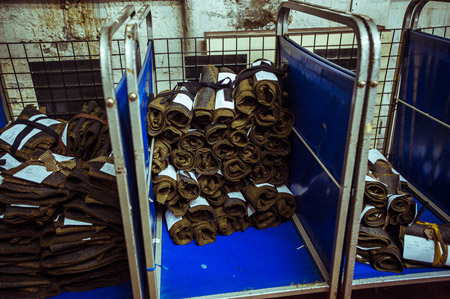

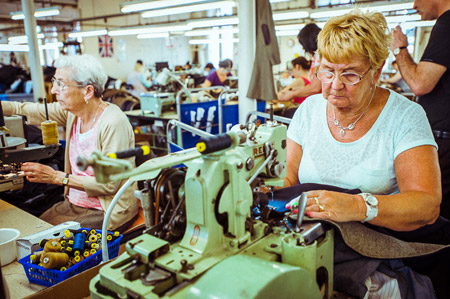
Subscribe to Port Magazine annually and receive each issue to your door.
Get PORT in print

